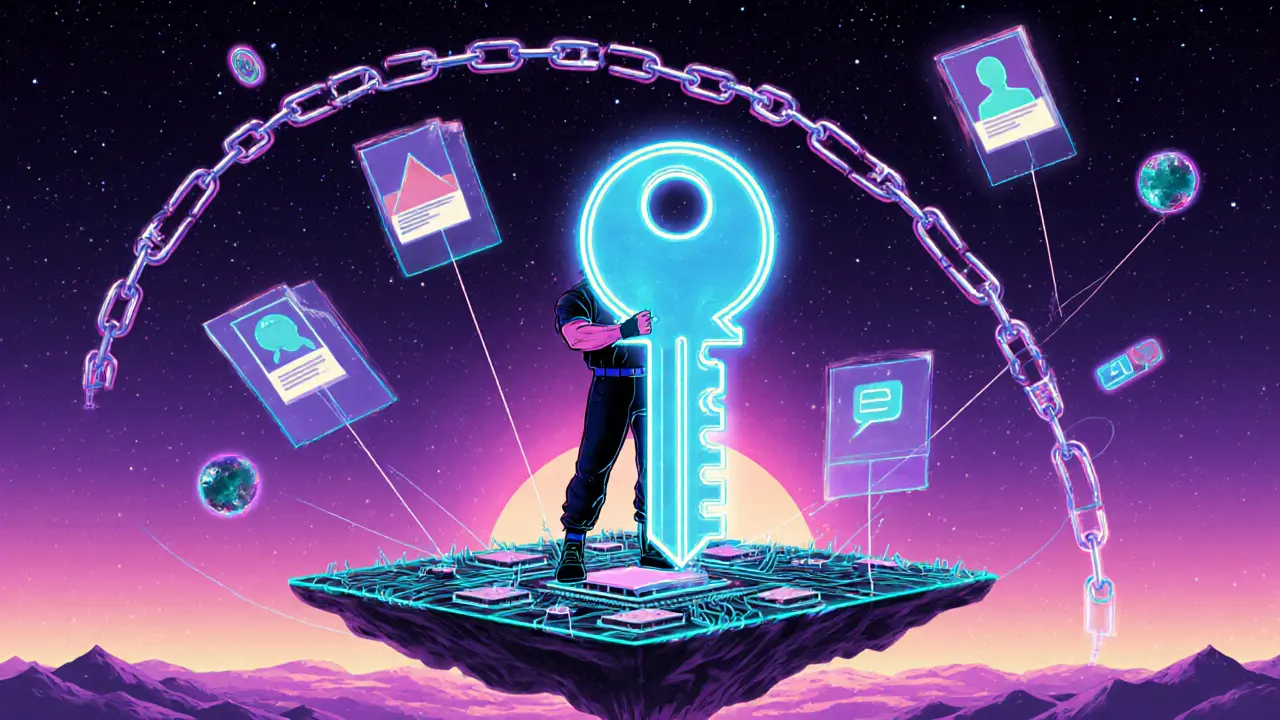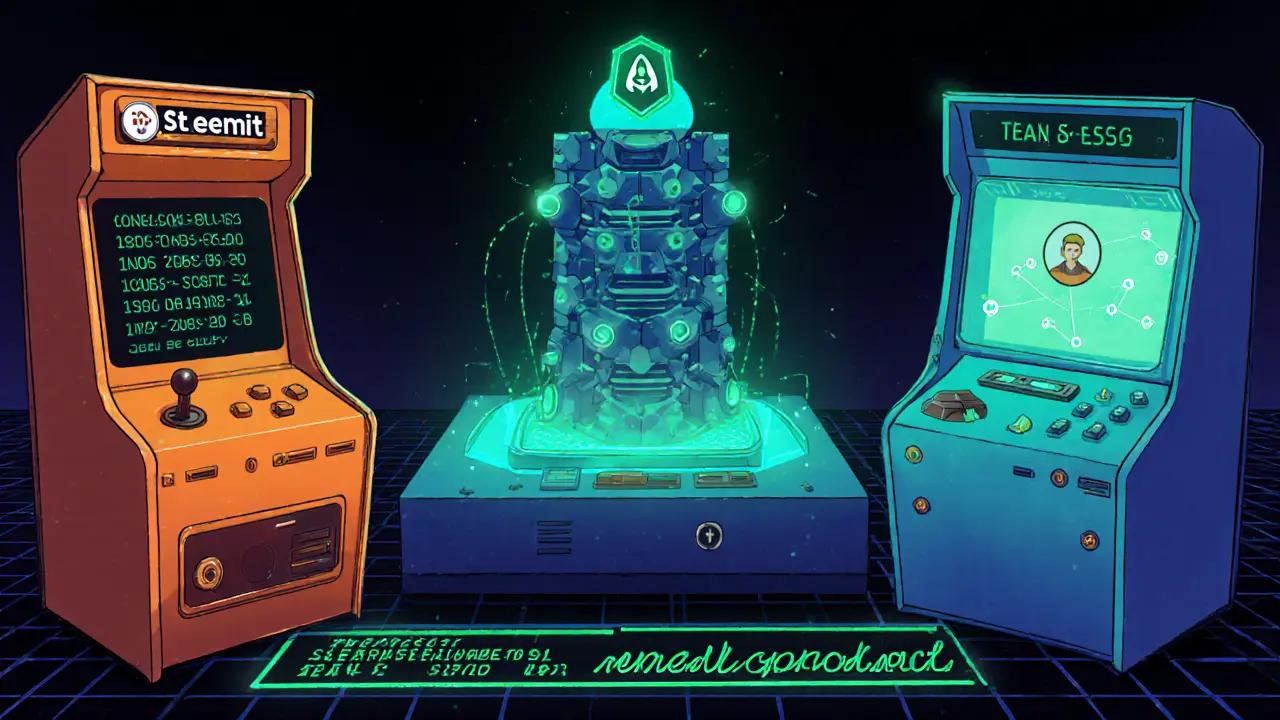User Data Control on Blockchain Social Networks - A Practical Guide
 Nov, 7 2024
Nov, 7 2024
Blockchain Social Network Cost Calculator
Cost Estimate Results
Imagine a social platform where you hold the keys to every post, photo, and comment - no hidden algorithms deciding what stays or goes. That’s the promise of blockchain social networks. In this guide we’ll break down how these networks give you real control over your data, what tech makes it happen, and which platforms you can actually use today.
Why Data Control Matters
Traditional giants like Meta or Twitter store everything on their own servers. When they change a policy, delete an account, or sell data to advertisers, you rarely have a say. Blockchain‑based platforms flip the script: your identity, content, and permissions live on a distributed ledger that you own. This shift isn’t just hype - studies from Rejolut (2023) show a 37% YoY rise in users seeking data sovereignty, and the EU’s Digital Services Act is tightening the rules around data portability, giving decentralized solutions a regulatory edge.
How Data Control Works on Blockchain Social Networks
Three technical building blocks make user‑centric control possible:
- Distributed ledger technology provides immutable records for identity verification and transaction history.
- Decentralized storage (e.g., IPFS or Filecoin) holds the actual media files off‑chain while keeping a hash reference on the ledger.
- Smart contracts act as programmable access‑control layers, letting you grant or revoke permissions with a single transaction.
When you post, the content’s hash is stored on the blockchain, a reference to the file lives in IPFS, and a smart contract records who can read or edit it. Because the contract runs on every node, no single company can unilaterally change those rules.
Leading Platforms and Their Approaches
Here are the most talked‑about networks as of 2025:
- Steemit - launched on the Steem blockchain in 2016, it rewards creators with native tokens and stores posts on a purpose‑built chain with ~3‑second block times.
- Minds - built on Ethereum Layer 2, it uses token‑gated privacy controls and integrates with MetaMask for key management.
- Mastodon - while not a blockchain, its ActivityPub federation mirrors the decentralization ethos and serves over 1.2 million users across 5,000 nodes.
- Lens Protocol - an Ethereum‑based profile layer that lets you own your social graph and swap it between apps.
All these platforms share a core principle: your cryptographic key (a 256‑bit hex string) is the master switch for your data.

Benefits Over Centralized Platforms
Compared with the likes of Facebook or Twitter, blockchain social networks score higher on several key metrics:
- True ownership - 98% of platforms implement end‑to‑end encryption, versus 42% for traditional services (Pew Research, 2024).
- Immutability - Steemit has recorded zero unauthorized content deletions since 2016.
- Transparent permissions - smart contracts enable audit logs that are instantly verifiable by any participant.
- Lower storage fees - decentralized storage averages $0.01/GB/month, about half of AWS’s $0.023/GB (July 2024 data).
These advantages translate into real user stories: a Minds user revoked an advertiser’s data access in two clicks, something they said was impossible on Instagram.
Challenges You’ll Face
Despite the perks, there are real hurdles:
- Key management - 63% of newcomers need help during onboarding (Peiko study). Losing your private key means losing access, with no “reset” option.
- Transaction costs - each permission change incurs a gas fee, currently $0.05‑$0.50 on Ethereum Layer 2s (August 2024).
- Performance limits - on‑chain finality takes 15‑30 seconds, slower than the near‑instant processing of centralized services.
- Media bandwidth - high‑resolution video is still pricey; 78% of platforms limit uploads to images and short clips.
Solutions are emerging: wallet apps now embed key‑recovery via social recovery, and new Layer 2 rollups cut finality times to under 10 seconds. Zero‑knowledge proof extensions (DSNP consortium, 2024) aim to hide data while still proving permission compliance.
Getting Started: A Practical Checklist
- Choose a wallet (MetaMask, Trust Wallet, or a hardware wallet) and back up the seed phrase in a secure location.
- Buy a small amount of ETH or the native token of your chosen network to cover gas fees.
- Register on a platform - for beginners, Minds offers the smoothest UI; for token‑centric creators, Steemit is a solid pick.
- Connect your wallet to the platform’s smart‑contract interface and set your default privacy level.
- Test the revocation flow: grant an app access, then revoke it and confirm the transaction appears on the block explorer.
Most users finish these steps in 30‑45 minutes, but plan on needing a friend or community guide for the first few transactions.

Side‑by‑Side Comparison: Centralized vs Blockchain Social Networks
| Feature | Traditional Platforms | Blockchain Social Networks |
|---|---|---|
| Data ownership | Company‑owned; users grant licenses | User‑owned via cryptographic keys |
| Content mutability | Company can edit or delete at will | Immutable on‑chain records (unless user revokes) |
| Storage cost per GB/month | $0.023 (AWS pricing) | $0.01 (IPFS/Filecoin average) |
| Transaction speed | Instant (internal databases) | 15‑30 seconds (Ethereum L2) / 3 seconds (Steem) |
| Privacy controls | Limited; often opaque policies | Smart‑contract governed, auditable |
| Regulatory compliance | GDPR‑compliant via data centers | Built‑in data portability; GDPR‑compatible smart contracts (Cao et al., 2024) |
Future Outlook
Analysts expect blockchain social platforms to capture 15% of global social media users by 2027 (Gartner). The next wave will likely be hybrid: centralized services keep fast content delivery, while identity and permission layers migrate to Ethereum, ION, or Layer 2 solutions. Watch for zero‑knowledge privacy upgrades and broader wallet‑based single sign‑on standards - they’ll lower the technical barrier that currently holds back mass adoption.
Frequently Asked Questions
Do I need to be a crypto expert to use a blockchain social network?
No. Modern wallets like MetaMask provide a graphical interface for key creation and transaction signing. Most platforms guide you step‑by‑step, and community groups are very helpful for beginners.
What happens if I lose my private key?
Without a recovery mechanism, you lose access to your account and any data you own. Some newer networks offer social‑recovery options, but it’s safest to store your seed phrase offline in multiple secure locations.
Are transactions on these platforms expensive?
Typical permission changes cost $0.05‑$0.50 on Ethereum Layer 2s. If you batch actions or use low‑fee chains like Steem, costs drop to a few cents.
Can I still share videos and high‑resolution images?
You can, but storing large files on-chain is pricey. Most users store the media on IPFS/Filecoin and link to it, keeping on‑chain data minimal. Expect higher costs and slower upload times compared to YouTube.
How do these platforms handle GDPR requests?
Smart contracts can be coded to enforce the right‑to‑be‑forgotten by encrypting data with keys you control. Once you destroy the key, the data becomes unreadable, satisfying GDPR’s deletion requirement.
Kyle Waitkunas
October 24, 2025 AT 05:47Okay but let’s be real-this whole ‘blockchain social media’ thing is just Big Tech’s new disguise for surveillance capitalism. They’re just swapping your data to a ledger so they can sell it to the highest bidder… but now with MORE STEPS. You think you own your data? Nah. You own a 256-bit string that some hacker will phish from your uncle’s unsecured laptop in 2027. And don’t get me started on ‘social recovery’-you’re trusting your ex, your mom, and that guy from Discord you met once to not sell your identity to the CIA? HA. They already know everything. The blockchain doesn’t hide you-it just makes you harder to delete. And if you lose your key? Congrats. You’re now a ghost in the machine. No one’s coming to save you. No customer service line. No ‘forgot password?’ button. Just… silence. And the echo of your own naivety.
Susan Bari
October 25, 2025 AT 04:41How quaint. You’re all still debating whether to use IPFS or Filecoin like it’s 2018. The real revolution isn’t in the tech-it’s in the aesthetic. A decentralized identity isn’t about control-it’s about *curating your own mythos*. If you’re still using MetaMask, you’re not early adopter. You’re just late to the party wearing last season’s crypto hoodie. The future is zero-knowledge social graphs wrapped in NFT avatars that auto-generate poetry from your emotional biometrics. Everything else is just noise with gas fees.
Sean Hawkins
October 26, 2025 AT 01:28There’s a lot of valid technical insight here, but I’d like to clarify a few misconceptions. First, while IPFS and Filecoin do offload storage, they aren’t inherently immutable-the hash is on-chain, but the file can be pruned if no node pins it. Second, ‘true ownership’ is misleading; you own the key, but the content’s discoverability still depends on network participation. Third, the 98% encryption claim needs context: most platforms encrypt only in transit, not at rest on the user’s device. Also, gas fees aren’t just $0.05–$0.50-they’re volatile. During congestion on Ethereum L2s, they spike unpredictably. And while Steemit has zero unauthorized deletions, that’s because its moderation is community-driven, not algorithmic. The real challenge isn’t the tech-it’s the UX. Most users don’t understand public/private key pairs, and forcing them to manage seed phrases is a usability disaster. We need abstraction layers, not more complexity. Wallets should feel like email, not root access to a server.
Marlie Ledesma
October 27, 2025 AT 00:10I just tried Minds last week after reading this and honestly-it felt like a warm hug after years of being yelled at by algorithms. I didn’t even know I was craving control until I could see exactly who saw my post. No ads. No shadowbanning. Just me, my words, and a little slider that says ‘allow this app to read my profile.’ I revoked access for a meme app I used once and it felt… peaceful. I’m not techy at all, but the interface walked me through it. I cried a little. Not because it’s perfect-it’s not-but because for the first time, I felt like I wasn’t being used.
Daisy Family
October 27, 2025 AT 08:29